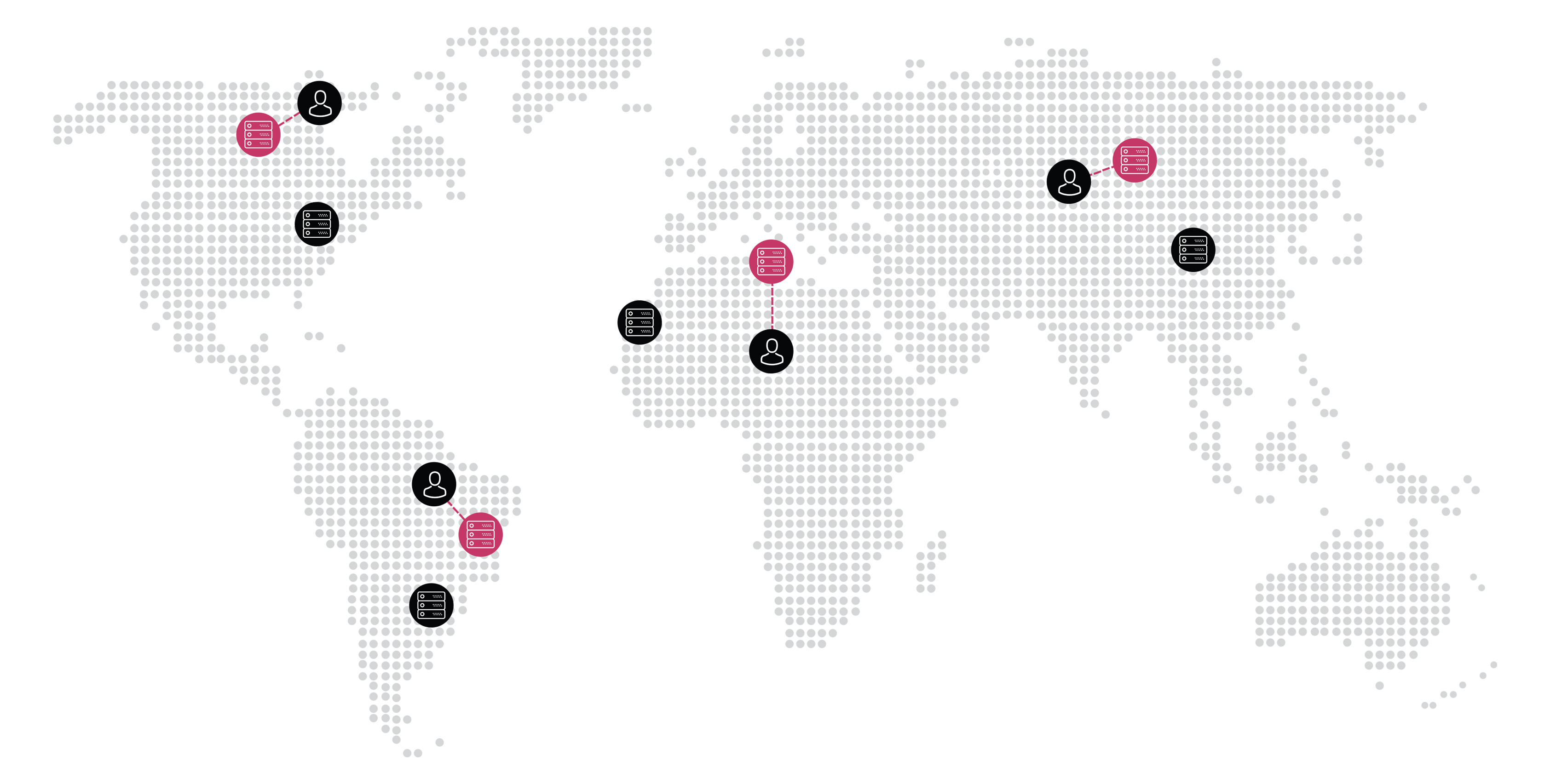Overview
Optimize Content Delivery with Haltdos CDN
Most applications and websites that you use every day runs from one physical location. But, content like text, images, or videos, needs to carry over wires to the entire world.
How does it work?
For instance, your servers are based in New York. In this case, people in Boston will get content faster compared to people in Tokyo or San Francisco. Farther the customer from the data center of the company, slower the load time of application or website. It leads to frustrating and inconsistent user experience.
Lag time generally frustrates users (both web and mobile-based) accustomed to real-time digital experiences. According to LoadStorm:
-
25% of users leave a website if its load time is greater than 4 seconds.
-
74% of users leave a mobile site if its load time is greater than 5 seconds.
-46% of users don't return to a poorly performing website.
You need a Content Delivery Network (CDN) to fix this issue.

What is CDN, and how does it work?
A CDN is a method to deliver content to people quickly and effectively, based on their geographic location. CDN is designed using a network of servers (points of presence, or POPs) geographically positioned between the origin server and users requesting it. The prime aim is to reduce the latency and ensure the fast delivery of content.
Edge Server is the CDN server closest to the user. When people request content from a site served through a CDN, they get connected to the nearest edge server. It ensures the best possible online experience.
You can even cache your content on CDN. It ensures that it gets delivered to end-users much faster. For example, if someone tries to access content from your mobile or website, their request will need to only travel to a nearby PoP and back no need to visit origin servers of the company.
CDN even purges your content regularly. It ensures that you get the latest and updated content always. Well-known as content invalidation, purging allows businesses to update content as and when required.
CDN Advantages:
- Faster load time
- Ensures site stability
- Improved site performance
- Easy to scale at the time of heavy traffic
- Reduces traffic spikes risk at the point of origin
- Reduces infrastructure costs due to traffic offloading
Modern CDNs vs. traditional CDNs
Since the 1990s, we are using the CDN. Traditional CDN always lags behind technology and hardware advancements. Due to which they lag the same benefits as modern CDN. The legacy CDNs are not built-in agile software environments where an enterprise is continuously incorporating customer feedback, iterating on products, and improving the product. These CDNs are around for five or more years without any modifications.
Static and Dynamic Content Purging
Traditional CDNs caches only static content. It does not change as per user input and is fairly straightforward. Example: CSS, Videos, Images, and Javascript.
Dynamic content changes frequently. It requires server logic. For example, updates on a shopping cart on an eCommerce site or credit card transactions. It is also known as uncacheable. The reason being, it needs to pass through an origin server owing to the sensitivity of the data.
However, some of the dynamic content can still be cached content which doesn't include personal data. It is unpredictable and can change frequently. It is an event-driven content. It relies on the actions either from a machine or a human. For example, news headlines, sports scores, user-generated comments, and stock prices. Most CDNs consider this type of content as uncacheable. But it can be cached.
The Edge
Traditional CDNs depend on spinning hard drives. They can deliver only limited content at the edge. They need to prioritize what needs to cache at the edge and what goes further in. It also implies larger sites get priority over smaller sites.
Modern CDNs are built on an extensive network of SSDs (solid-state drives). It caches everything at the edge; thereby, all customers get the advantage.
Reverse Proxying
Reverse Proxying is another significant benefit of modern CDNs. In traditional CDNs, clients have to upload content to cache servers the first time directly. Modern CDNs fetch and save content from the origin server of the customer as per the request. There isn't any need to front-load the cache servers.
Sites that use traditional CDNS have to keep dynamic content on the origin server. It results in slow performance as well as traffic spikes. Beating the purpose of a CDN.
CDN Benefits ALL
Anyone who owns a mobile application or a website that is requested by more than one user at a time can get benefit from a CDN. These are quite useful to large, complex sites that have users spread across the globe and includes a large amount of dynamic content.
CDNs deliver a range of specific benefits to different types of businesses and enterprises:
-
Ecommerce: CDN ensures quick and efficient content delivery, especially during heavy traffic, like holidays and Black Friday.
-
Government: CDN allows large, complex, and content-heavy websites to efficiently and swiftly deliver vital information to citizens.
-
Finance: CDNs provide a fast, secure, and reliable infrastructure to banking institutions so that you can efficiently deliver sensitive data to analysts and consumers.
-
Media / Publishing: Media websites demand updated and timely information. CDN allows updating news homepages and headlines as stories unfold in real-time. Also, it ensures to remove data as it turns obsolete.
-
Mobile apps: CDN provides dynamic geo-based content for mobile apps. It not only minimizes load times and but also enhances responsiveness.
-
Technology and SaaS: CDN ensures billions of requests get served in a day without hampering performance.